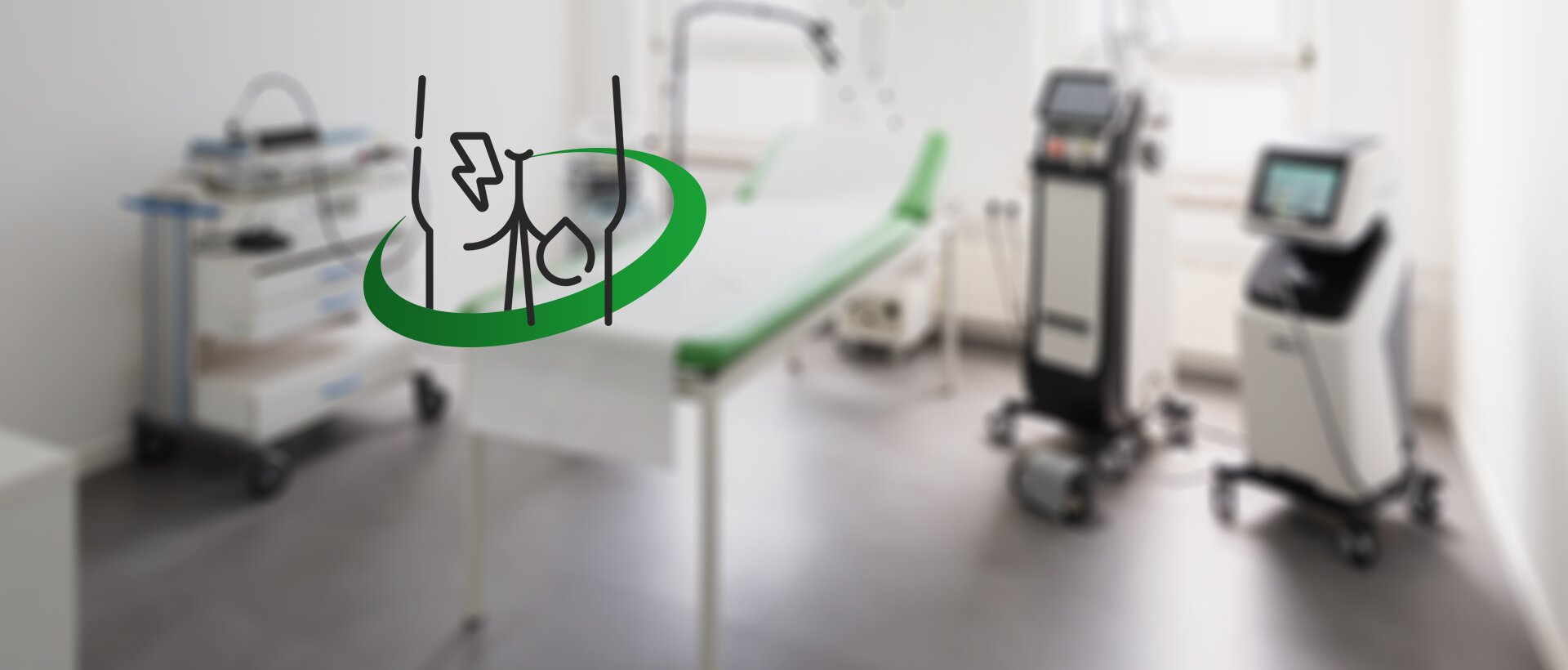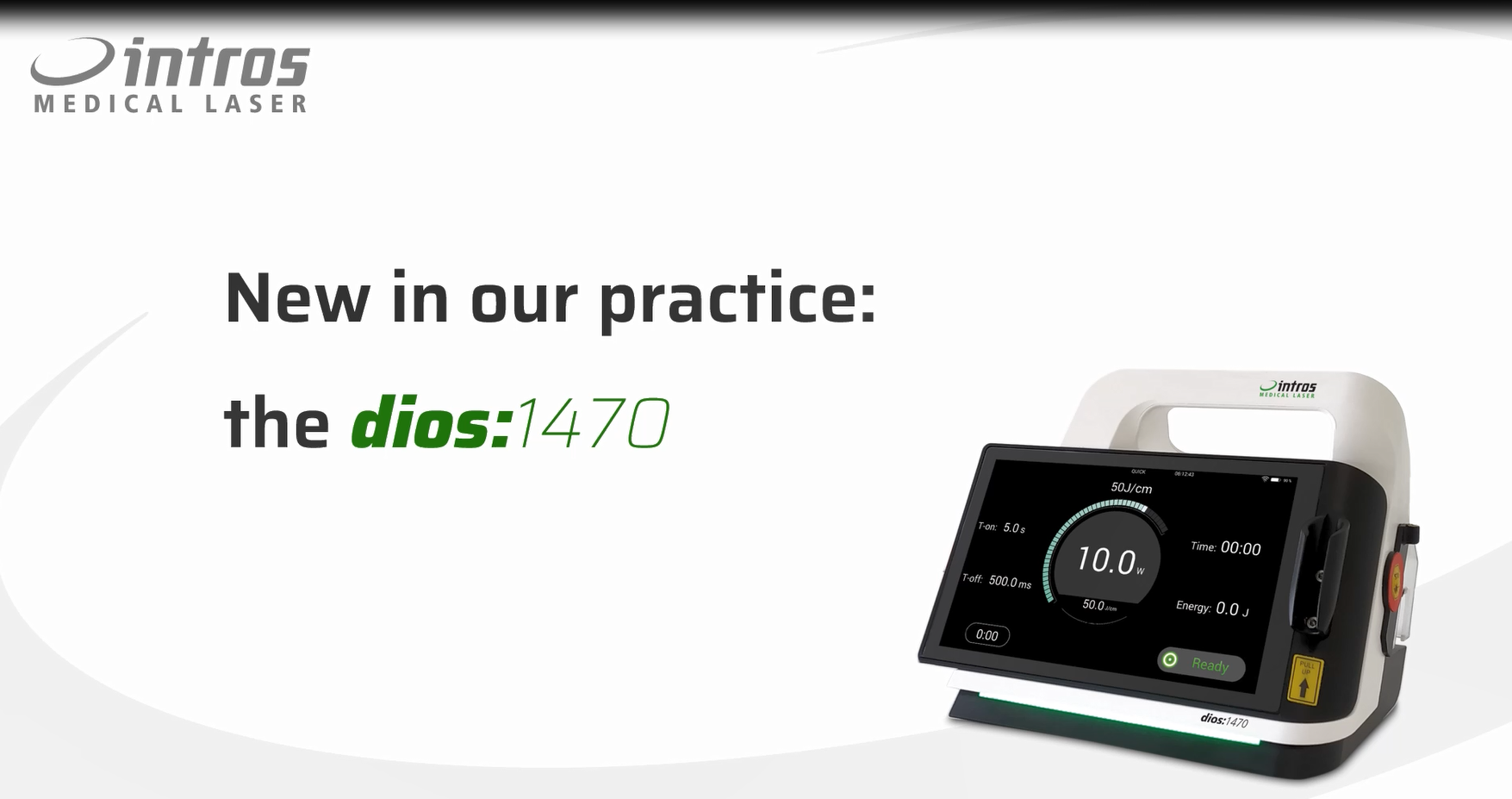Treating hemorrhoids and anal fistulas – the minimally invasive alternative to surgery
Minimally invasive, tissue-friendly, effective: as a tried and test therapy method, laser therapy has long been established in proctology. It enjoys high acceptance among patients because it has hardly any side effects and can be performed quickly. It offers many other significant advantages over conventional procedures, including being less invasive, shorter convalescence periods and less postoperative pain.
Laser therapy is most commonly used in proctology for treating hemorrhoids. It is also used for the removal of polyps and genital warts. Lasers can also be used to treat anal fistulas and coccygeal fistulas and are effective for fissures.
With innovative devices, such as the intros dios:1470, and in combination with laser fibers, such as the intros Fistula Fiber, we provide the perfect tools to start or expand the use of this innovative treatment method.
Laser therapy in proctology
Technology and mode of operation
Treating hemorrhoids (HOLT®)
In the treatment of hemorrhoids, the so-called laser hemorrhoidoplasty has shown good results. The safe, painless and minimally invasive treatment method called HOLT® (= hemorrhoid occlusion laser therapy) uses a fan-shaped emitting hemorrhoid laser probe developed specifically for this treatment. It enables the gentle shrinkage of grade 2 to 4 hemorrhoids requiring treatment. Pinpoint coagulation ensures the best possible preservation of the surrounding tissue and reduces side effects on the sphincter and anal mucosa.
Treating anal fistula (FOLT®)
There are a number of benefits to lasering anal fistulas, such as coccygeal fistulas, instead of having surgery. With the FOLT® method (= fistula occlusion laser therapy), a flexible, diffusely emitting fistula laser probe is inserted into the fistula tract, the inflamed tissue is destroyed in a controlled manner, the fistula tract is closed and the original anal gland is inactivated. The fistula tissue is destroyed in a gentle way, meaning it is possible to dispense with scooping the fistula out of the healthy tissue. Another advantage of proctological laser surgery is that it spares the sphincter muscle and prevents anal faecal incontinence.
Benefits
Products
FAQ
Proctological laser therapy is ideal for minimally invasive procedures for 2nd - 3rd degree hemorrhoids, anal fistulas, mariscus and smaller hemangiomas.
The benefits of laser proctology surgery are found in the minimally invasive method. There are no incisions or only small incisions, resulting in a positive effect on the healing process. Large wounds, long healing times, postoperative pain or infections due to contamination in the anal region are a thing of the past because, in contrast to a conventional hemorrhoidectomy or coccygeal fistula operation, no extensive tissue removal is required.
Laser haemorrhoidoplasty enables tissue-sparing coagulation of the haemorrhoidal nodes without incisions. This reduces post-operative pain and speeds up the healing process.
In most cases, local anesthesia or light sedation is sufficient, as hemorrhoid removal with laser can be minimally invasive and largely painless.
In laser hemorrhoidoplasty, power levels between 6-10 watts in pulse mode are common, while 10-12 watts are often used in anal fistula laser therapy. The controlled retraction of the fiber for uniform coagulation is crucial.
The 1470 nm wavelength is strongly absorbed by the water in the tissue, which means that the energy has a targeted effect and the surrounding tissue is spared - ideal for proctologic laser therapy.
Yes, mariscus removal with the laser is particularly precise and gentle. The diode laser enables an anemic procedure and clean removal with rapid healing.
The recurrence rate is low with the correct indication and technique. Anal fistula laser treatment has proven to be particularly effective for transsphincteric and intersphincteric fistulas.
If the procedure goes without complications, hemorrhoid treatment with a laser (laser hemorrhoidoplasty) takes about 20 minutes.
Patients are usually able to return to work after a few days. The low level of trauma caused by laser haemorrhoidoplasty enables a significantly shorter convalescence than with conventional procedures.






